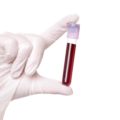
Experts are calling this spring a particularly bad one for seasonal allergy sufferers. If you're coughing, sniffling and sneezing more than usual, it may be time to bite the bullet and go see an allergist. Here's what to expect at your appointment:
According to the Allergy, Asthma and Sinus Center, your first meeting with a new allergist will likely last two to three hours. The doctor and his or her medical team will ask you about your symptoms and any environmental factors that may be exacerbating them. Questions that come up may include whether own pets, exercise outside or smoke. He or she may conduct a brief physical exam.
Next you will undergo a dermal allergy test, in which a professional (often a nurse) pricks or scratches your skin with tiny samples of various allergens. This typically isn't painful, causing only minor discomfort. The test can be performed on the back or forearm. Sometimes allergists will elect to use an intradermal test, which involves injecting the allergen samples deeper under the skin. (This test tends to be more accurate, and is sometimes used to assess allergies in a patient who doesn't react to standard prick testing.)
Within 15 to 20 minutes, you may see swelling or redness around the patch of skin that was tested, similar in appearance to mosquito bites. This is indicative of a sensitivity to the allergen used at that particular site. Your medical provider will measure and record the severity of the reaction.
Once your allergist has a list of your specific allergy triggers, he or she will help you craft a treatment plan. This may include prescription or over-the-counter medications, environmental adjustments or dietary changes. Consider investing in allergy bedding and an allergy air purifier, to minimize symptoms. Learn more at the Allergy Be Gone website!









